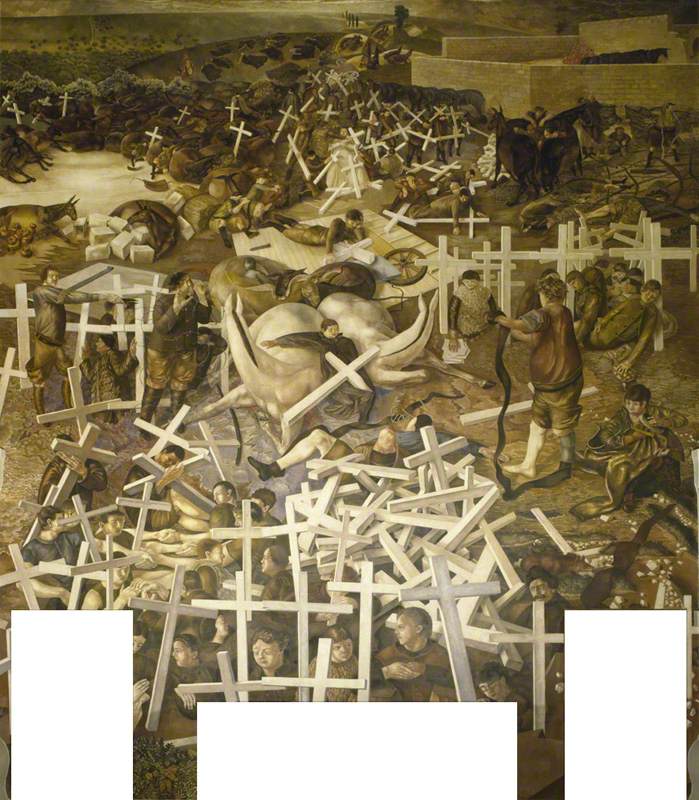By Canon Ian Morter
On the day this article is published it is Armistice, the anniversary of the end of the First World War. This weekend we keep Remembrance Sunday. A day when we recall with thanksgiving all who have died in both World Wars and sadly the many subsequent theatres of conflict. Throughout our land the War Memorial in Cities, Towns and villages recall the bravery of those who gave their life that justice and peace might triumph over tyranny, oppression and the darkness of evil.
For many decades I have known the work of Sir Stanley Spencer (1891-1959) partly because my late parents in law lived in Cookham where Spencer was born and lived most of his life, it is also where The Stanley Spencer Gallery is situated which I visited on a number of occasions. Following the death of his brother Sydney in action in 1918, Spencer became resolved to one day build a memorial chapel, and soon began sketching speculative designs. But it was not until 1923, when he met the patrons John Louis and Mary Behrend, that Spencer’s own aspirations began to materialise.

The Sandham Memorial Chapel is in village of Burghclere in Hampshire it was built as a memorial to Mary Behrend’s brother, Lieutenant Henry Willoughby Sandham, who died of illness contracted in Macedonia during the First World War. The Chapel was completed in 1932 to Spencer’s design, by the architect Lionel Pearson. The interior of the Chapel is decorated with 19 oil paintings on canvas by Spencer. On each of the side walls are four predellas that are below four arched panels, which are beneath a sprawling panorama. Behind the altar there is a monumental resurrection scene. Spencer was inspired by ornate frescoes by Giotto (1267–1337) at the Arena Chapel in Padua.
Sadly I have never visited the Sandham Chapel but in preparation for the centenary of the First World War in 2014 the Chapel, now in the care of the National Trust, underwent a major restoration. While the work was undertaken on the building the paintings were removed and displayed in a wing of Somerset House, London and I had the opportunity to see these amazing paintings. All the 19 paintings commemorate and depict Spencer’s own experiences of the First World War first as a hospital orderly in Beautfort Hospital Bristol then on the Macedonian Front in Salonica as a stretcher–bearer and later as an infantryman.
Like many war artists the experience of The First World had a very profound effect on Spencer, his paintings in the Sandham Memorial Chapel reflect not only the horrors of War but also the mundane tasks that went on behind the theatre of battle. We now have a better understanding of the long-term effects that military personnel have as a result of the trauma of conflict. This was little understood at the time when Stanley Spencer and his contemporaries were serving. But thanks to many service based charities like the Royal British Legion, SSAFA and Help for Heroes they are there to help those who have served this country in the Armed Forces.